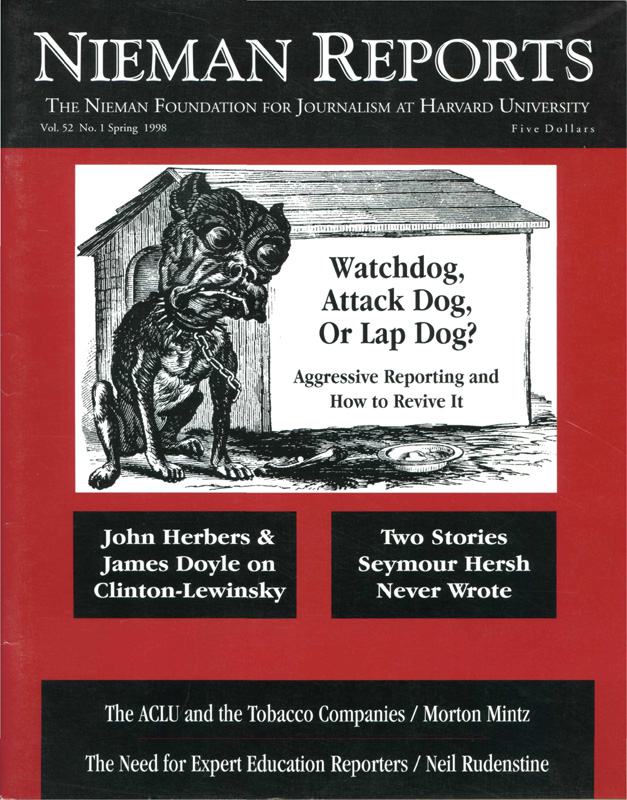NEW YORK
To the Editor:
I’m delighted that my letter of some months ago asking [Tom Regan, Nieman Reports technology columnist] to explain the differences between reporting for the conventional media and reporting for the Internet provided him with column material in the Spring 1997 Nieman Reports.
Let me see if I have his explanation straight; In addition to being able to “write a great story, ” the digital journalist has to handle a tape recorder, a digital camera and a videocam, edit these elements for his/her story after surfing the Web for relevant sites for the piece and be at the ready to “engage her readers in an ongoing dialogue.”
I gather that the digital journalist provides considerable material for the reader since “the reporter/editor doesn’t tell the reader what’s important—the reader decides that for herself.”
If this adequately summarizes his response to my letter, I’ll be happy to use it in the next edition of one of my textbooks.
Just another question: During my visits to several on-line news providers, I was told that stories have to be much shorter, much more condensed than the traditional piece in print. I have problems reconciling that with your material.
MELVIN MENCHER
The writer, a 1953 Nieman Fellow, is the author of textbooks widely used in journalism schools.
To the Editor:
I’m delighted that my letter of some months ago asking [Tom Regan, Nieman Reports technology columnist] to explain the differences between reporting for the conventional media and reporting for the Internet provided him with column material in the Spring 1997 Nieman Reports.
Let me see if I have his explanation straight; In addition to being able to “write a great story, ” the digital journalist has to handle a tape recorder, a digital camera and a videocam, edit these elements for his/her story after surfing the Web for relevant sites for the piece and be at the ready to “engage her readers in an ongoing dialogue.”
I gather that the digital journalist provides considerable material for the reader since “the reporter/editor doesn’t tell the reader what’s important—the reader decides that for herself.”
If this adequately summarizes his response to my letter, I’ll be happy to use it in the next edition of one of my textbooks.
Just another question: During my visits to several on-line news providers, I was told that stories have to be much shorter, much more condensed than the traditional piece in print. I have problems reconciling that with your material.
MELVIN MENCHER
The writer, a 1953 Nieman Fellow, is the author of textbooks widely used in journalism schools.



